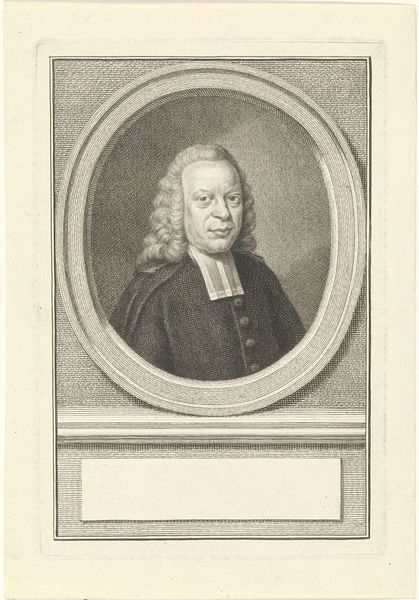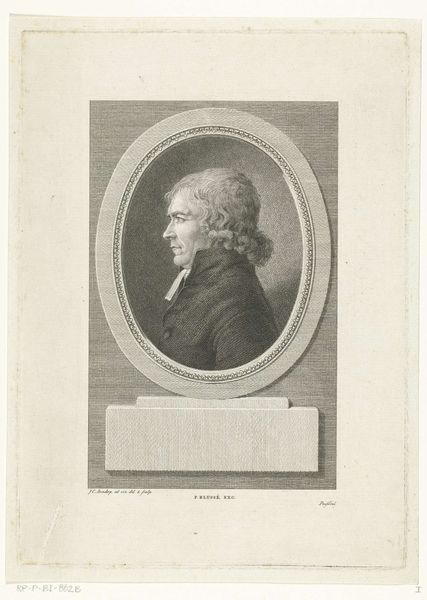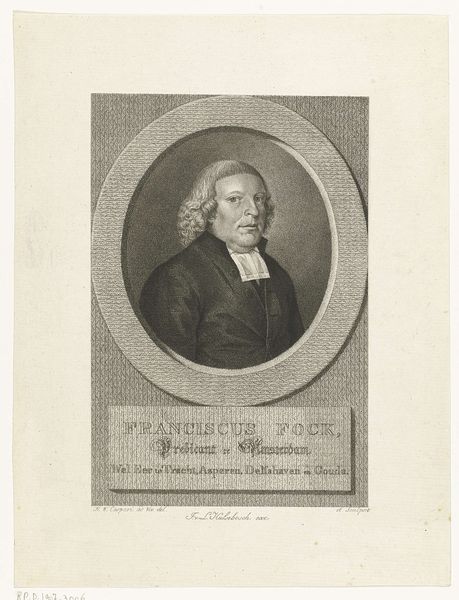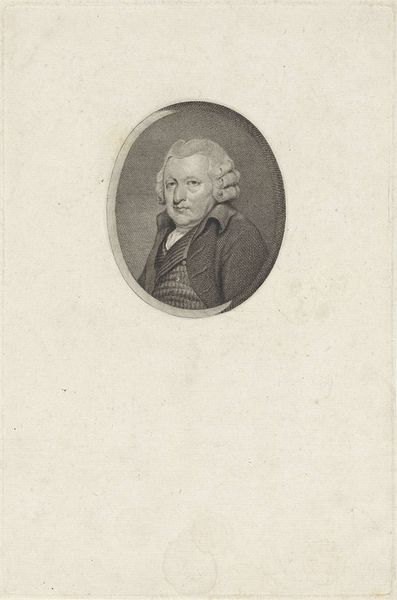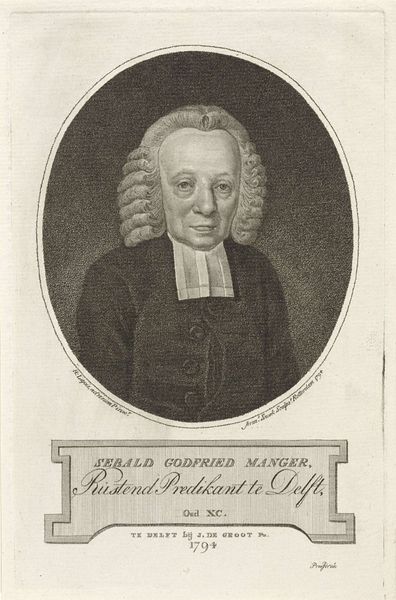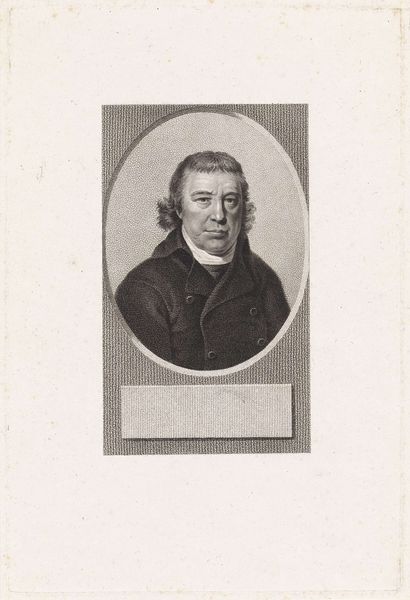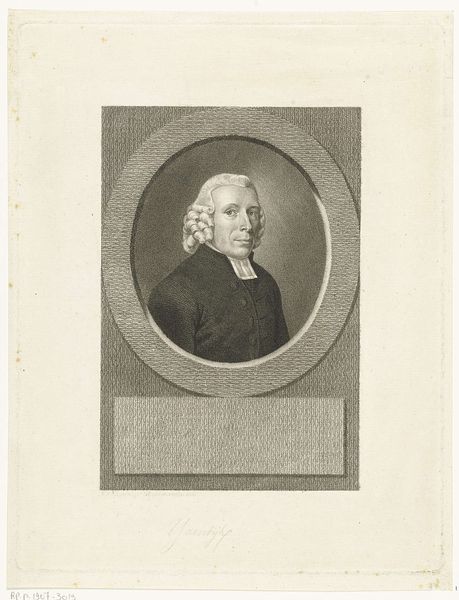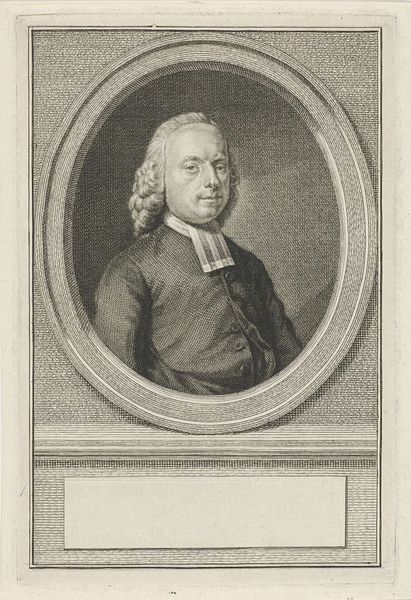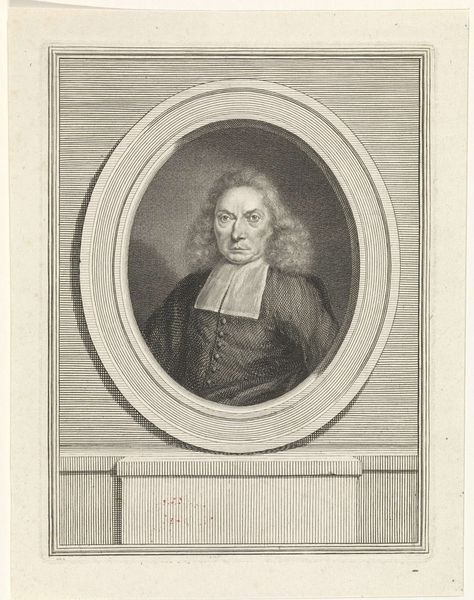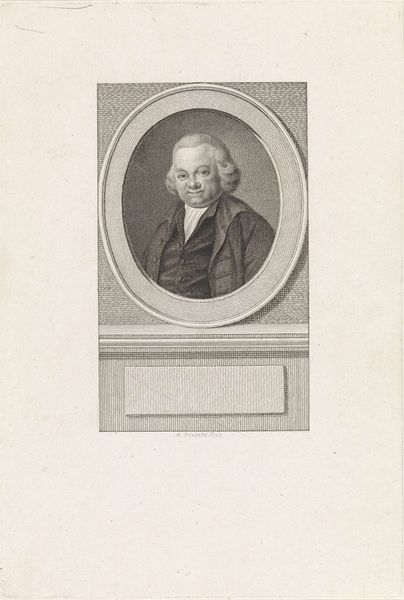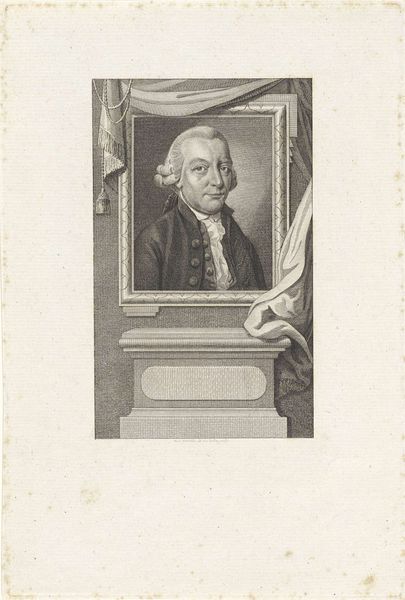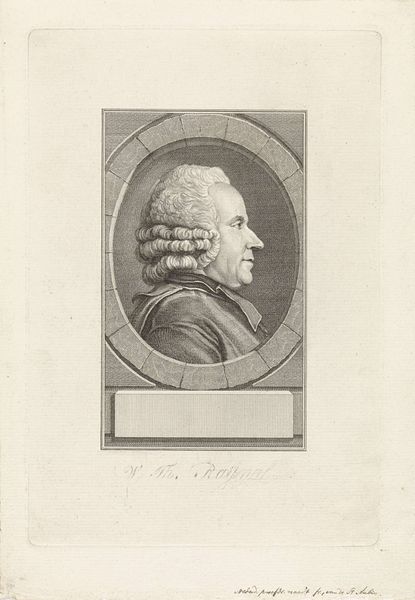
#
pencil drawn
#
photo of handprinted image
#
aged paper
#
light pencil work
#
yellowing background
#
photo restoration
#
pencil sketch
#
light coloured
#
old engraving style
#
pencil work
Dimensions: height 261 mm, width 181 mm
Copyright: Rijks Museum: Open Domain
Editor: So, this is "Portret van Albertus Brink" by Jan Willem Caspari, dating sometime between 1789 and 1822. It’s a pencil drawing, and the paper looks really aged. The portrait feels…stark, almost severe. What do you see in this piece? Curator: I see a portrait deeply embedded in its socio-political context. Look at the subject, Albertus Brink. What does his attire and the style of the engraving tell us about the power structures of that era? Consider the Dutch Republic at the end of the 18th century, riddled with internal conflict. How does Brink, presumably a member of the elite, embody or challenge those power dynamics? Editor: I hadn’t thought of it like that. His simple clothes… they almost seem at odds with the powdered wig and the formality of the oval frame. Was this a deliberate choice, perhaps? Curator: Precisely! Think about what it meant to be a man of status in a time of revolution and shifting social norms. The “simplicity” you observe could be a calculated performance, a way to project an image of pious authority amidst upheaval. How might Brink’s identity, and the artist's portrayal of it, speak to anxieties around class, religion, and social mobility during this tumultuous period? Editor: That makes me look at the image differently now. It's less about an individual, and more about this push-and-pull of societal expectations. I see the framing device as reinforcing certain ideas, and perhaps hinting at the need for restraint or reform. Curator: Exactly! It reflects not only individual character but the broader historical drama unfolding around it. Now consider how gender and colonialism played into that power dynamic... Editor: It is truly a product of a society in transition. This really underscores how portraits are not neutral records but constructed images loaded with cultural meaning.
Comments
No comments
Be the first to comment and join the conversation on the ultimate creative platform.
